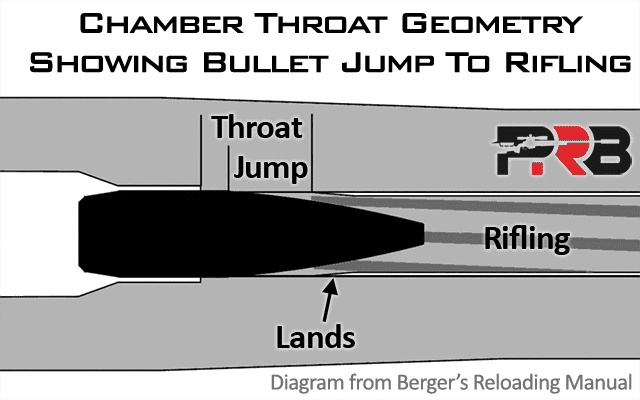I thought cartridge to base ogive was the measurement between the base and the ogive.
It is. The "lands touching point" is the distance from the bolt face to where the bullet interfaces with the lands, commonly presented in inches and described as BTO or CBTO. There are a few minor variances that aren't accounted for in your method, but generally speaking you're correct. Use a headspace comparator on the case you use to check depth, then on a sized one you're loading, and account for that difference and you're basically all the way there.
All the hooplah about touching and this and that and the other doesn't matter. Every measurement in this process is relative to some other dimension - even if you cast the chamber you're still at the mercy of the accuracy of your tools to measure the actual caliber diameter ogive and the actual datum line on the shoulder and so on and so on, where do you pick where to stop and be reasonable? A few thousandths here or there won't add up to anything that makes a difference if you're shooting for a wide seating depth node for practical use.
You can find the lands a bunch of ways, right up to loading bullets progressively longer until one sticks when you open the bolt and calling that your longest seating depth. Other than setting a "maximum" length to work backwards from it does not matter - after the initial seating depth you're loading bullets to particular BTOs and it doesn't matter if they're exactly 0.020" or 0.024" or 0.028" from the absolute perfect lands touching point as long as they shoot well and you load them consistently to that length.
If you're loading to score points in matches and can control every minor variable in the process you can do seating depth tests in 0.001" increments and chase the lands and get all bent out of shape about the absolutely best and most perfectly repeatable measurement. In the practical world try to find the widest node of depths you can to get the most consistent performance so if one variable gets messed up you aren't screwed.
The thing I actually take the most issue with in your method is shooting 3-shot groups. Any string less than 10 shots (but preferably 20 or more) doesn't provide inferential results. It provides negative confirmation that the group won't get any smaller than what the shots did, but can very certainly get larger. So if the first two shots are further apart than you want, stop wasting the third shot and pull the bullet when you get home. Or...
Either an arbor press or a Lee hand press will let you adjust seating depths are the range - seat two to each depth initially and leave the rest at the longest BTO - if you find a string of two-shot groups that looks promising seat some of the longer bullets down to that level and shoot more.

